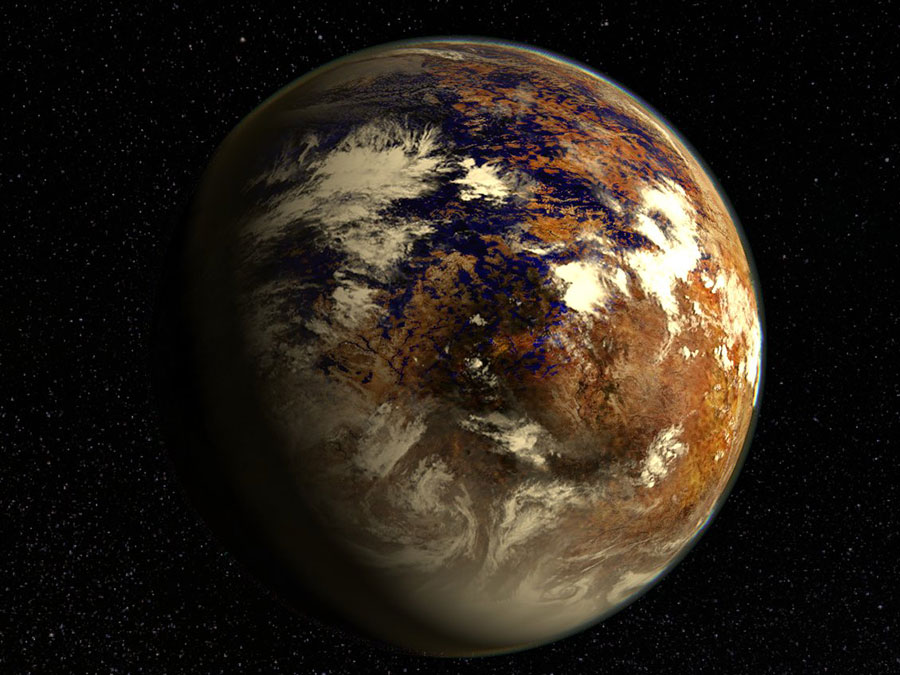Scientist confirmed the existence of Proxima b, a planet orbiting Proxima Centauri, the closest star to the solar system.
Proxima b also happens to be the closest planet to earth that orbits another star that is not the sun. It is located in the habitable zone of Proxima Centauri, which means that there is a high probability of the planet having water at a surface level. Scientists suggest that besides being the closest exoplanet to the earth, it may be able to accommodate life.

Looking for habitable planets
The finding was published in the journal Nature by a team led by Guillem Anglada-Escudé from the Queen Mary University of London. The planet was discovered by directing telescopes at Proxima Centauri, trying to pick up periodical Doppler movements of spectral lines coming from the host star. The variations in the periodicity of the rays emitted by the star would indicate the existence of an orbiting object, which could then be determined to be a planet.
Proxima b is located 1,295 parsecs away from earth, equivalent to 4.2 light-years or 2.469 times 10^13 miles. Although similar planets have been found, Proxima b is radically close as other exoplanets located 40 light-years apart from earth were already considered to be close.
Researchers highlighted the fact that Proxima Centauri is the closest star to our solar system, meaning that there are no other “nearby” planets to us other than possibly “Planet Nine,” a planet that was carried out of its orbit by the sun 4.5 billion years ago and possibly roams the outskirts of the solar system.
Proxima b is next
Proxima b is 1.3 times larger than earth and it orbits Proxima Centauri every 11 days, meaning that the planet’s relative distance to its star is actually quite short. The research team compared it to the distance between Mercury and the sun. The difference is that Proxima Centauri is a red dwarf with a mass equivalent to an eight of the sun’s, although it is denser.
Scientists still do not know if the planet has an atmosphere, which is vital for determining whether the planet can sustain life or not. In this case, Proxima b receives high levels of X-rays and ultraviolet light, which would have an important effect on the development of life forms on the planet, if there is any. The existence of a magnetic field like earth’s is also important, as it helps shield the planetary surface from the different types of radiation emitted by the orbited star.
Because Proxima Centauri is a red dwarf, the star’s lifespan is 400 times longer than the sun’s. It is also possible that both orbital and rotational periods of Proxima b are in synchronicity, just like the earth; but this is yet to be proven.

Is there anybody out there?
For a planet to be habitable it has to be located in a circumstellar habitable zone, also known as a Goldilocks zone. These zones are where the atmospheric pressure is such that it is possible that the planet harbors water on a surface level. The closest exoplanets deemed as potentially habitable are located over 490 light-years away, a much longer distance compared to Proxima b’s proximity. The nearest of these is Kepler-186f, which is 1.2 times larger than earth and also happens to orbit a red dwarf star.
Coincidentally, the Alpha Centauri binary star system, where Proxima b orbits, is the destination of the Starshot mission. The Starshot mission aims to create nano crafts impulsed by light, able to reach speeds of up to 100 million miles per hour. Achieving such speed would allow the nano crafts to reach the Alpha Centauri system in only 20 years, thus obtaining important pictures and data about the planets that orbit the binary stars, such as Proxima b.
Starshot is part of the Breakthrough Initiatives program, whose main purpose is to determine whether humans are alone in the universe and if there are any other habitable planets besides ours.
Scientists agree that the next step should be to capture images of Proxima b’s surface, which will yield enough information to determine whether the planet has an atmosphere and if it is hospitable or not. Currently, there is not enough technology to accomplish the task, but there are observatories being developed to specifically study the Alpha Centauri system and Proxima b.
Although there are high expectations, there is still much work to be done in order to try and assess Proxima b’s habitability. It is possible that the planet cannot be fit for human life, but that does not completely rule out the possibility that it may contain life forms.
Because there are already projects trying to shorten the distances between earth and the Alpha Centauri system, it is a matter of time until the scientific community obtains more information regarding this interesting and exciting planet. Finding extraterrestrial life would mean a complete turn-over of human history as we know it, which is why there are many things to gain from promoting research pointed towards the study of the Alpha Centauri system and Proxima b altogether.
Source: CNN
